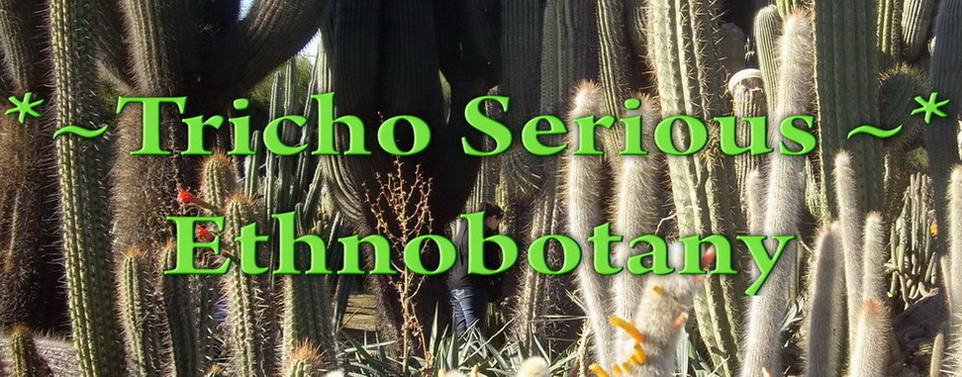Trichocereus Peruvianus, the Peruvian Torch Cactus or San Pedro Macho, is a fast-growing columnar cactus native to the western slope of the Andes in Peru, between about 2,000–3,000 m (6,600–9,800 ft) above sea level. Trichocereus Peruvianus has a long history of being used in Andean traditional medicine. Archeological studies have found evidence of use going back two thousand years, to Moche culture. Currently it is believed to help with nervous conditions, joint problems, drug addictions, cardiac disease, and high blood pressure. Trichocereus Peruvianus contains hordenine and "it has been shown that hordenine, N,N-Dimethyl-hydroxyphenylethylamine, exhibits an inhibitory action against at least 18 strains of penicillin resistant Staphylococcus bacteria.
The plant is bluish-green in colour, with frosted stems, and 6-9 broadly rounded ribs; it has large, white flowers. It can grow up to 3-6 meters tall, with stems up to 8-18 cm in diameter; it is fully erect to begin with, but later possibly arching over, or even becoming prostrate. Groups of 6-8 either red or honey-coloured to brown rigid spines, up to 4 cm in length, with most about 1 cm, are located at the nodes, which are evenly spaced along the ribs, up to approximately 2.5 cm apart.
Got these from Herbalistics.com.au. Come from sacred succulent seed of the Peruvianus found around Matucana, Peru. These will end up nice big fat, blue Peruvians. Really like these type of plants. Very similar to the Roseii clones and Icaros Peruvianus from the same location or abouts. The skinny one was squished in the post but has recovered fine, just looks abit funny :)
Picked up some more of these guys from a private collector via Sacred Succulents who describe the plants as follows, T. peruvianus BK08612.4 - wild collected above Matucana in Peru. "Fat blue-green stems to 6" or more in diameter. New spines are red to yellow, up to 3" long. Often growing prostrate. White flowers. Seed mostly from specimens with shorter spines, under 1". :)
29th April, 2012 Update~*









No comments:
Post a Comment